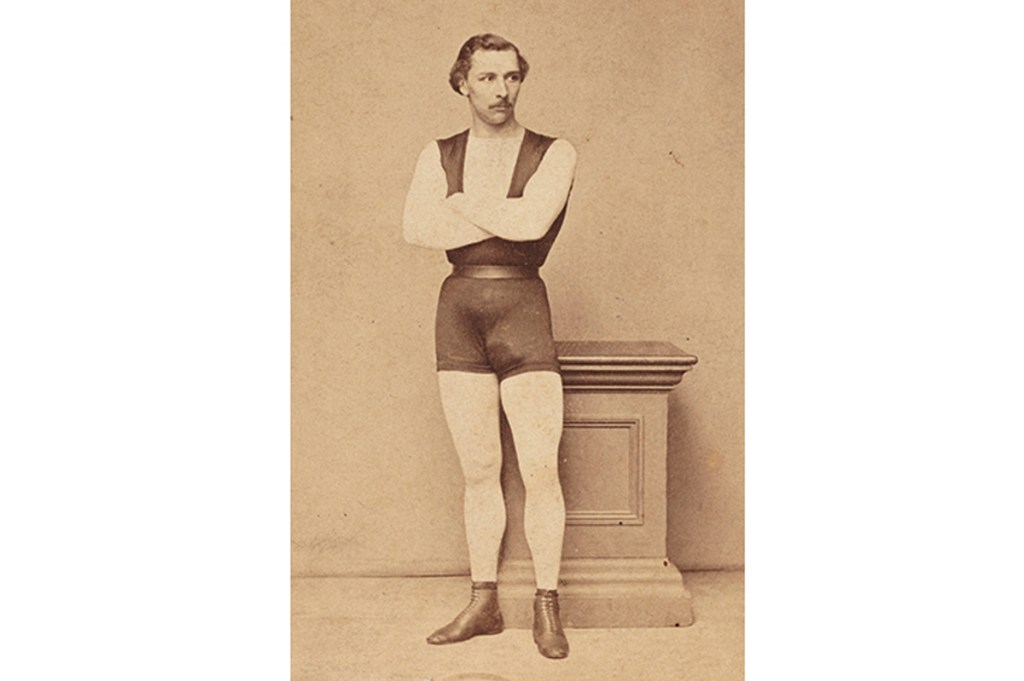Jules Léotard was blessed in his name. It might have been quite different had he been called, say, Jules Droupé. As it was, his family name was lithe, elongated, taut. It was a name with stretch.
Léotard was born in Toulouse in 1838, the son of a gymnastics teacher. The young Jules might have become a lawyer. He passed his legal exams, but twisting words wasn’t enough. He wanted to be twisting, turning, falling, flying. At 18, he began to practice with trapeze bars, ropes and rings over a swimming pool. He joined the Cirque Napoléon and on November 12, 1859, performed its first flying trapeze routine.
He became the subject of a popular song of 1867, ‘The Daring Young Man on the Flying Trapeze’, by the British lyricist and singer George Leybourne. ‘He’d fly thro’ the air with the greatest of ease/ A daring young man on the flying trapeze…’ I’d always thought that it was a joyful song, light, weightless, winging over the airwaves. Not a bit of it. Our narrator opens: ‘Once I was happy, but now I’m forlorn,/ Like an old coat that is tattered and torn…’ The girl he loves has fallen head over heels with an acrobat and run away to join the circus.
Léotard performed in a one-piece knitted suit which he would have called a ‘maillot’ but which later took on his name to become the super-stretchy leotard beloved of ballerinas, Olympic gymnasts, Jane Fonda and assorted supermen and women. You may remember the skit in Disney Pixar’s The Incredibles when Edna Mode, a fashion designer for superheroes, shows Mrs Incredible her new costume. ‘Virtually indestructible,’ says Edna as rockets launch. ‘Yet it breathes like Egyptian cotton.’
Leotards have been in the news lately. Some ballet schools are set to abolish them because they could make trans dancers feel self-conscious or lead them to adopt dangerous methods of disguising their bodies. Instead loose-fitting clothing is to be encouraged.
It is true that leotards are unforgiving. One sees every lump and bump, which rather forces dancers not to be lumpy or bumpy. One cannot wear a bra. A busty ballerina is as rare as the fabled Black Swan. One certainly cannot easily nip to the ladies (or gents). Donna Karan solved this problem in the 1980s when she invented ‘the body’, a leotard with three strategic poppers.
It would be a shame if the leotard were outlawed. What would Chicago, Cats or Dirty Dancing be without their leotards? Think of the great climactic scene of Flashdance in which Jennifer Beals, in leotard and legwarmers, dances for her life to Irene Cara’s ‘What A Feeling’.
The leotard was always a happily ambiguous garment. Man or woman: one simply became a performer. As the final verse of ‘The Daring Young Man’ has it: ‘She floats thro’ the air with the greatest of ease,/ You’d think her a man on the flying trapeze,/ She does all the work, while he takes his ease,/ And that’s what’s become of my love.’
This article was originally published in The Spectator’s November 2021 World edition.

























